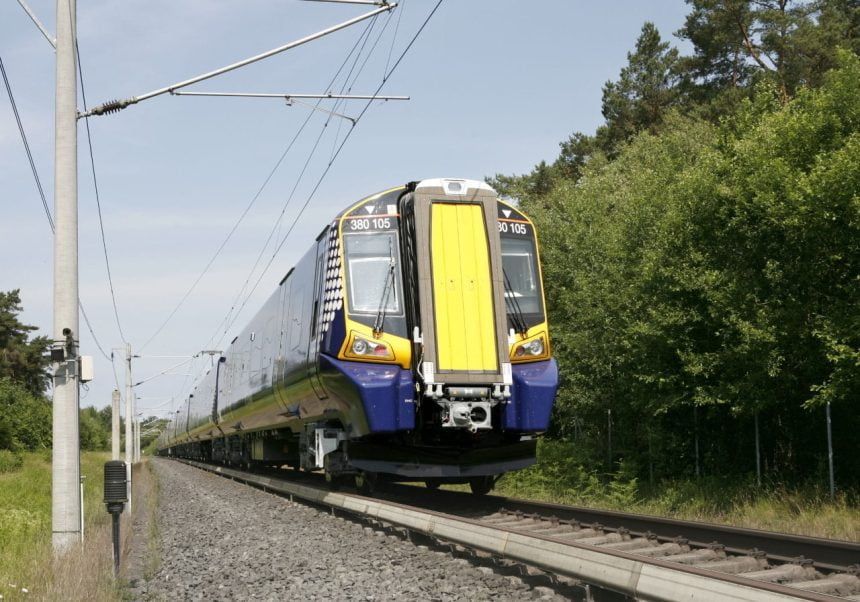The Scottish Government has set a target date of 2035 to achieve a Net-Zero carbon footprint on Scotland's Railways.
ScotRail is on track to meet that target. It has reduced its carbon footprint by 38 percent since 2014, including a 30,002-tonne saving in 2020.
In real terms, that's equivalent to over two million car journeys between Edinburgh and Glasgow, or the carbon footprint produced by 2,308 people over a 12-month period.
By switching from road to rail, it is estimated that travellers can reduce the CO2 output from their journey by roughly 70 per cent on diesel trains, increasing to around 90 per cent on an electric train journey.
Between 2014 and 2019, 325km of the railway network in Scotland's central belt was electrified, supported by an investment of £370m in a fleet of 70 new electric trains that are faster and greener than their predecessors, and with a larger passenger capacity. Already, over 76 per cent of passenger and 45 per cent of freight journeys in Scotland are on electrified lines.
A major challenge in completing electrification is the difficulty of ensuring that there is sufficient headroom to run electric wires under bridges and through tunnels. Across central Scotland, about 90 structures needed to be rebuilt or significantly altered to support electrification works. Also, bespoke systems needed to be designed for the electrification of the Winchburgh and Queen Street tunnels.
Electrification may not be viable on rural routes, so hydrogen and battery-powered trains are being developed to meet their needs.
Ongoing plans to decarbonise the rail infrastructure include taking all diesel trains out of service over the next 15 years, and projects are currently underway on lines around Glasgow to achieve that aim.
It is estimated that the use of a fuel additive will deliver a three percent reduction in diesel fuel across Scotrail's fleet, with the added benefit of a reduction in carbon and nitrous oxides.
ScotRail is also investing in energy-efficient technologies. Plans are already in place to deliver Scotland's first net zero carbon station at Falkirk High.
Alex Hynes, Scotland's Railway Managing Director, said: “In recent years a huge amount of progress has been made in a short timeframe, making the transition from road to rail easier as every milestone is reached.
“We have identified electrification and the transition from diesel to alternative traction such as hydrogen and battery trains as the key to achieving zero CO2 emissions on Scotland's Railway by 2035, and we are pushing ahead with big investment to make that a reality.
“Rail is already the most sustainable mode of public transport, contributing only one percent of Scotland's overall transport carbon emissions but, there's no doubt a cleaner and greener network is something we should all be working towards.
“And it's not all about trains. We have to develop a transport system for everyone. One that integrates walking, cycling, wheeling, buses, and electric cars with our stations.
“We'll be looking to further develop our partnerships with organisations that link modes of transport together like local authorities, Regional Transport Partnerships, bus companies and bike hire firms to make it much easier for people to choose an integrated sustainable journey.”
Where Next on RailAdvent?
Subscribe for More
Railway News
DVDs, Prints, Cards, Gifts and more
MAINLINE STEAM INFO
Competition Time!
COMMUNITY PHOTOS
FREE NEWSLETTERS
